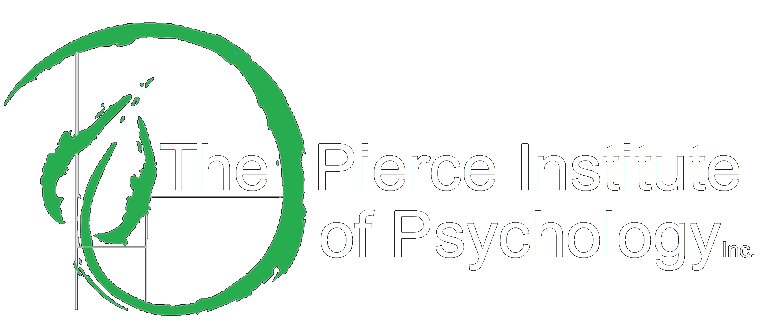How Do You Teach Kids to Respect Adults?
This is an interesting question that we often run into. Parents, teachers, and adults in general complain that so many young people do not speak respectfully to their parents and teachers.
If you are reading this, we pose the question to you: Are you appalled at the way some children speak to adults?
Now for a “trickier” question: Are you appalled at the way many adults speak to children?
Is it okay for parents to speak sarcastically to their children and expect their children to speak back respectfully?
Is it okay for teachers to say negative things about a child in front of the whole class yet expect students to respond “respectfully” despite their anger and frustration?
Is it okay to interrupt a child but expect the child to not interrupt?
Is it okay to grab something in anger from a child and expect the child to not repeat such an action with a sibling?
Is it okay to embarrass a child or put a child on the spot in front of others and expect that child to speak politely and respectfully to others?

Kids model what they see and hear. This is not new information—we all know that the old saying “Do as I say not as I do” does not work! Yet we see plenty of “disrespect” going on between parents and kids, between mom and dad, between parents and other adults. And kids get very confused!
The best way to teach kids respect is to respect them. In our LearningSuccess coaching model, respect includes the following actions on the part of adults:
1. Celebrate the children you have. Don’t be regretful that you didn’t get different ones! Don’t be discouraged because the ones you have would be wonderful “if only…” Celebrate your children’s skills, accomplishments, and uniqueness. Tell them often how important they are to you, how much they are valued and loved for who they are. Children whose characteristics are honored and respected in this way will honor and respect the unique characteristics of others.
2. Focus on solutions. It does no good to say things like, “I told you so.” “When will you start listening?” “If I have to tell you one more time…” “You did it wrong again.” “We’ll see how you behave.” “You’re irresponsible.” “If you don’t stop crying you’ll get more consequences.” Comments like these merely generate anger, resentment, frustration, sadness, anxiety, helplessness, grief, and much confusion as the child struggles to maintain some sense of integrity in the face of these “attacks.”
Just think how it would feel to you if other adults were talking to you in these ways. Perhaps your parents said similar things to you—by thinking back you can recall the negative feelings that came up.
When raised with a blame-and-punishment way of dealing with issues, kids become afraid, withdrawn, resistant, rebellious, or a combination of these. Kids who are raised with solution-focused problem solving techniques develop the ability to keep going in the face of setbacks. A solution-focused approach starts with the situation at hand, does not label or threaten, and invites the child to be part of the solution.
3. Identify their goals. Be interested in your children’s interests. Encourage their natural talents, skills, and abilities. Respect what they are passionate about. Recognize that what they love might not be the same as what you love! Children who are treated in this way develop focus and confidence. Their good feelings about themselves spill out into good feelings toward others.
4. Track successes instead of failures. Point out all the “right” things your children do. This is the only thing that really motivates: experiencing success propels you forward to more successes. Constantly being told what you’re doing “wrong” gives the message that you are not very capable, you’re never good enough, you won’t amount to much.

Einstein said that it takes 11 positives to overcome one negative. That means it would take 1,980,000 positives to overcome the 180,000 negative statements it is estimated we have heard by the time we are 18 years old! You can begin now to point out your children’s successes: Thank you for making the bed; I love how you put the napkins on the table; How nice that you helped your brother; You got 3 out of 4 letters correct in that word!
Children who grow up hearing what they do “right” learn to respect their own strengths and weaknesses as well as the strengths and weaknesses of others.
5. Respect your children’s feelings and needs. Just because they are “children” or they are “young” does not mean that they don’t know anything. We can fall into the trap of “He’s just a kid – he needs to learn to do as I say.” Remember that a child is a person, with feelings, needs, ideas, thoughts, and opinions. It is the job of the adults to help children learn:
- how to sort through information, emotions, and interactions
- to value and respect themselves and others
- to choose friends who respect themselves and others
This job is made easier when adults treat children the way they would like to be treated.
6. Find out about learning styles. Knowing your children’s learning styles can help everyone in the family develop more positive communication habits and respect for each other.
Suppose you often label your child with one or all of the following descriptions:
“noisy, rude, interrupts, disrespectful, talks too much, interferes with others’ conversations, has to make a comment about everything”…
Now suppose you knew that your child has a:
1. Performing Disposition – that means she learns by doing, moving, and experiencing – she has to be involved in order to “get it”
2. Verbal Modality – that means he has to talk things out, discuss, and observe out loud in order to “get it” – he is processing and learning as he talks about it
3. Word-Language and/or Humor Talent – that means she takes delight in “practicing” new vocabulary, humorous twists, and fun ways of using language
Would knowing all this make a difference in how you view your child? Does it help to realize he/she is not out to make life difficult for you but instead is relating to the world through his or her natural learning and communicating styles?
And what if you knew that YOU have a
- Thinking/Creating Disposition – that means you need lots of quiet time to think and process and figure things out
- Visual-Picture Modality – that means listening to chatter and having “high” noise levels will likely wear you out
- Interactive-Self Talent – that means you need uninterrupted alone time
Well, you can probably see by now how all this information can be very valuable. Now you have a starting point to talk about your needs and your child’s needs and to come to agreements that meet those needs.
You also now have a different understanding of why your child “acts that way.” With that understanding comes the ability to talk to your child in a different way. “Stop being rude” or “Can’t you see I’m talking” or “You’re so noisy – why can’t you be more like…” can be replaced with “I can see you’re very excited – I need you to wait until I’m finished talking to your brother, then I want to know all about it” or “I’m going to be having a grown-up conversation with my friend and need quiet time. I am requesting that you read your book (build with Legos, etc.) in your room until I’m finished. It will probably take 30 minutes (1 hour, etc.) – I will let you know when we are finished.”

What about school related issues? What if your child has a terrible time with spelling, resists doing spelling worksheets, and you are constantly battling over studying for the weekly spelling test?
What if you knew that your child is not a print learner but a visual-picture learner? That means he is not a natural speller in the first place and will NOT learn to spell with a spelling workbook or flashcards or by writing missed words 100 times each! Just knowing that would bring relief! And you would probably discontinue viewing your child as resistant, unmotivated, or lazy. Now you can seek out strategies that work for a picture learner, the battles will stop, and the learning methods will be effective.
Knowing learning styles in a family can go a long way toward enhancing relationships, communication, and a peaceful environment. It also sets the tone for respectful communication between members of the family, enabling the adults to model:
- understanding
- respect for differences and individual needs
- respectful language
copyright 2014 by M.Willis / Reflective Educational Perspectives, LLC, Ventura, CA
Tag:child, children, disrespect, learning, modeling, parenting, respect, role model




2 Comments
Great article, Mariaemma! So easy to overlook the very obvious principle of the mirror between our behaviour and our children’s.
I ask my Mastery Club Facilitators to avoid the phrase, ‘You need to’ with their students. It’s really quite dishonest, isn’t it, because it’s usually we parents/teachers who ‘need’ our children to behave in a certain way to make things easier for us!
Here’s to greater consciousness as we teach and parent.
Thank you, Liliane. I definitely agree – “you need to” is actually not an effective, nor an empowering, phrase to use with anyone – adult or child. But, often, adults believe they are the “authority” and, therefore, they can say anything to kids.